Tis the season to be gifting
Tis the season to be gifting, and that means by December 26, your home will be filled to the brim with new gadgets and gizmos thanks to Santa and his elves (not to mention all of the presents from doting grandparents, aunts and uncles, family friends and more). On the other hand, that also means that by Valentine’s Day, your home is likely to be filled with discarded or broken toys that were exciting to open on Christmas morning, but have since fallen victim to the fickle whims of young attention spans.
So how do you make sure all the efforts of Santa and his elves don’t go wasted? Happily, we’re here to help with a guide to gift-buying for children. The ideal gift not only holds a child’s attention for more than the usual five minutes, but also teaches children and helps them develop important skills. The art of giving the right educational gift to the kids in your life isn’t an easy one to nail down, but we’ve surveyed the opinions of hundreds of parents to find what have proven to be the best gifts for kids at every age of their development. So have a scroll on down to the age you’re shopping for and see if any of these might be the perfect present for some lucky little boy or girl.
Contents
- Can Infants Really Learn?
- Best Toys for Infants and Babies
- Best Presents for Children 12 to 36 months (Toddlers Toys)
- Best Gifts for Children 3 Years Old (And Up)
- Best Gifts for Kids 4 Years Old (And Up)
- Best Gifts for Kids 5 Years Old (And Up)
- Best Gifts for Kids 6 Years Old (And Up)
- Best Gifts for Kids 7-8 Years Old (And Up)
- Best Gifts for Kids 9-10 Years Old (And Up)
Can Infants Really Learn?
How do you teach an infant much of anything at all? Actually, new parents over the world are astounded every day by the innate talents and personalities with which their children are born. Newborn babies can see faces and objects of different sizes, shapes and colors. They can communicate as soon as they’re born. They also need loving attention in order for their brains to develop and grow, in order to process and make sense of new information and ideas. You can facilitate this process by touching and hugging them, talking to them, spending “belly time” with them, giving them time to bond and interact with other responsible and loving caregivers, and allowing them play time with stimulating toys.
Best Toys for Infants and Babies
The crib mobile is a classic toy precisely because it works. Through playing music, spinning and using lights, crib mobiles stimulate and engage infants. Mobiles are also ideal for calming infants at bedtime. The Rainforest Musical Mobile offers a healthy balance of engaging and soothing. A remote control adjusts the settings and music volume, and the mobile plays classical music or sounds of the rainforest to help lull your baby to sleep.
Infant should also have plenty of time to kick and play – using a “baby gym” is one convenient option. Like a crib mobile, most baby gyms have hanging toys that babies can observe and try to reach for. This Piano Gym also encourages leg exercise and strengthening – when baby kicks and hears the noises he can create on the attached keyboard, he’s encouraged to keep kicking. If you want to switch from back to belly, collapse the toy arch and keyboard and allow your baby some belly time on the baby gym mat.
Engaging your child in speech is a critical component to infant development. My Pal Scout helps – and even with its battery pack, it’s soft, plush and cuddly. This customizable toy connects to your device so that you can choose songs, help Scout “learn” your child’s name, and choose games to challenge and delight your child. This stuffed dog also has a bedtime feature: squeeze his paw to set a timer for lullabies. After the set amount of time, the lullabies will end and (if all goes according to plan) your child will be fast asleep. As your child matures, change Scout’s customization settings to keep him challenging your little one.
Babies do change, grow and develop rapidly in the first year of life, so if your baby seems bored with a toy he loved only a month ago, that’s a good sign! Graduate to newer, more difficult and challenging toys.
Stacking toys could be a great option – while classic blocks are fun, you might try Tobbles or pipSquigz.
pipSquigz come in various shapes and fun, bright colors. Their suction cup surfaces allow for playing, building and stacking anywhere with a flat, smooth surface. They’re silicone and dishwasher-safe – a must-have for children struggling with the pains of teething. pipSquigz’s textured silicone and internal rattle mean tiny hands still learning fine motor skills can easily shake, grip and play. This might be a simple toy that’s easy to use, but even older kids won’t tire of the colorful combinations – kids can constantly create new structures.
Like pipSquigz, Tobbles are bright, colorful and stackable, but they can be more challenging as your child learns. Tobbles are easily stacked in order of size, but there are also many other ways to stack and build with Tobbles. Kids will learn as they attempt to discover all the ways they can balance Tobbles on each other.
If you’ve got a budding musician on your hands (or just a kid who likes to bang on things), there’s the Early Melodies Pound and Tap Bench. Your child places the brightly colored balls into the first panel, then pounds on the balls to knock them onto the keys below. If your child tires of knocking the balls on the keys, the internal xylophone can simply be removed and tapped directly to create all the music (and noise) that kids want.
If your baby’s always grabbing to play with your phone (and you’re tired of explaining to friends and business contacts that you have an eager baby fascinated by touchscreens who keeps accidentally dialing them), you might try giving your child one of his own. The Touch and Swipe Baby Phone has an imitation touch screen, complete with 12 “apps” that light up and play music, sing ABCs, 123s and first words. Hopefully, the Baby Phone becomes enough to engage your child and he doesn’t keep grabbing for your phone!
For bath time or kiddie pool time in the warm summer months, there’s the Green Toy Tugboat. This simple toy is made entirely of 100% recycled plastic jugs. The plastic is not just earth-friendly, it’s safe and colorful, too. The design makes it easy to dunk and fill the boats with water, then pour out – either on each other during pool or bath time, or on baby for rinsing soapy heads of hair.
Finally, teach your children the spelling of their names for the first time with this US-made personalized name puzzle. Babies learn simple hand-eye coordination and shape-matching by placing the letters in the correct slots. At the same time, they learn the few letters that compose their name – a great way to introduce ABCs and spelling early on in your child’s development.
Best Presents for Children 12 to 36 months (Toddlers Toys)
By the time your child is 12 months old, they’re approaching the scary territory we call “toddler”. Even scarier – they’re learning to walk. If your child is cruising along sofas and cabinets but isn’t quite reaching independent walking yet, you might try a walker like this Sit-to-Stand Learning Walker. It’s collapsible in order for use as a toy with lots of colorful buttons and stimulating sounds, but on wheels it becomes pushable, providing support to prevent toppling toddlers and giving little ones a fun way to practice walking around the house.
Once your child moves from the crib to her big kid bed, she might miss the soothing sounds and lights of her mobile. The Tranquil Turtle easily fills this gap, acting as both a white noise machine (playing calming sounds of waves on the beach) and a night light, illuminating your child’s room with a soft, blue ambient glow.
For your child’s more energetic hours, there’s Bilibo, a super simple toy with a thousand and one uses. It’s a chair, a pool toy, a beach toy, a sled, a doll bed, a castle – or just about any other object your child can dream up. It encourages creative thinking and physical activity, and it’s one of the most age-versatile toys you can buy for your child. Your toddler will love it, but your older kids will love it, too. You’re likely even to find your ten year olds (or their baby-sitters!) trying to squeeze into it.
As your child grows out of her baby learning toys, she can graduate from her “touchscreen” phone to a “laptop” computer. The LeapFrog “Leaptop” presents your child with more songs, animal names, “emails”, and more challenging games – primarily for teaching basic spelling.
For more practice on basic math skills, give your toddler some cookies. The Smart Snacks Counting Cookies is a simple counting game in which cookies are labeled with a number – and contain the corresponding number of chocolate chips. The game is easy enough for a toddler to play (the cookies only count up to 10) and it makes an ideal game for older siblings to teach to younger siblings (enforcing their own counting skills as well).
If your child is eyeing every kid’s favorite toy – LEGO – but they’re not quite old enough to be playing with such small pieces, then first introduce them to DUPLO’s My First Build. They’ll reap the same benefits for their motor skills that LEGO provides, but avoid the potential danger faced by overly curious kiddos putting anything and everything in their mouths.
Use bath time to create a little magic – by which we mean, teach a little simple physics. The Plui comes in bright colors and smooth, safe plastic, and fills with water when dunked under the surface. Remove your finger from the top nozzle to fill, then replace your finger over the top nozzle before removing from the water. If your finger remains on the nozzle, water stays in the Plui – if you remove your finger, it sprinkles out from the bottom. Good for play – whether in the bath, at the beach or in the pool – and good for teaching, too.
Best Gifts for Children 3 Years Old (And Up)
For the budding engineer in your family, there’s GEARS! GEARS! GEARS! (That’s a lot of gears.) Their beginners set allows children as young as three years old to experiment with building spinning, colorful structures. The set includes an activity guide with instructions for building specific things like race cars and caterpillars, but there’s no wrong way to build. Encourage your child to use the open-ended components to build whatever she can dream up, and she’ll discover something new every time she plays.
Of course there’s always the classic LEGO toy for every creative kid out there. If you’re the kind of family that finds LEGO all over the house, you might consider this handy investment: a LEGO table. It keeps all of your LEGO in one spot, and provides an ideal surface to building sets according to the instructions, or throwing all instruction to the wind and building your own dreamed-up creation. You may find the adults in the house seated at the LEGO table as often as the kids are.
The SmartMax Basic Stunt is a clever way to teach young minds about magnets. The set comes with pieces to construct elaborate ramps and the cars to race on them. The magnets both work to build the ramps and vehicles, as well as repel, teaching kids some basic principles of physics. The pieces are durable and easy for little fingers still developing dexterity. If the toy is a hit with your kids, there are more sets for further building – but luckily the original set lends itself to nearly endless combinations for experimenting with construction, as well.
If your child prefers to airplanes to race cars, there’s the Battat Take Apart Airplane. Since Dad’s and Mom’s tools are still hands-off, kids can use these beginner “tools” – a plastic screwdriver, screws, pegs and plane parts – to construct their own plane. Kids can put together and take apart as many times as they want – just make sure to keep all the pieces in one place!
Encourage some physical activity with a glow-in-the-dark soccer ball. The Matrix NightBall is made of bright green rubber that glows blue and green light, so playtime can continue long past dinner time and into the night – that is, if the kids don’t have to wake up for school in the morning. The NightBall is also water-friendly so feel free to use it in the pool or bring it to the beach, too.
For the young artist in your family, try Don’t Let the Pigeon Finish This Activity Book! It’s way more than your run-of-the-mill coloring book. It’s also filled with reading activities and games, as well as cut-outs to create your own puppet show. All the pages are perforated to make punching out and constructing the pieces easy – plus, that makes the book easy for kids as young as 3 to enjoy, too.
If your 3 year old is already interested in playing with puzzles but hasn’t mastered the art yet, give them a beautiful and basic starting puzzle like this 16-piece Wooden Ship Puzzle. Once he’s figured that puzzle out, graduate him to a 24-piece puzzle to keep him properly challenged.
Delight the little scientists you know with Kinetic Sand. It looks like real sand but behaves a bit differently. Using 98 percent real sand and 2 percent non-toxic polymer, Kinetic Sand moves as you work with it, quickly rearranging itself. (Despite the polymer, it only sticks to itself and easily cleaned up.) You can build with it, shape it into objects, and then watch it melt away. It’s ideal for improving sensory awareness and fine motor skills, as well as reducing stress – so you might find the adults in the room playing it, too. The best part? It’s made in Sweden, where all good things happen.
If your child graduates from the pipSquigz, move on to Squigz. These building pieces have all the same fun colors, textured surfaces and suction functions of the pipSquigz, but they’re a little bit smaller for hands that have already mastered gross motor skills and need new challenges.
For more advanced motor skill practice, try the Stormy Seas Game of Balance. The “boat” game board must be loaded with “cargo” – and young players have to figure out how to load as many pieces of cargo without upsetting the balance and losing all the cargo. Simple enough to allow young children to play, but difficult enough to challenge them. Plus, gameplay is flexible – several people can join, or one person can play by herself.
Best Gifts for Kids 4 Years Old (And Up)
When it comes to tablets, many parents have strong feelings one way or the other, but if you’re pro-tablet, there are tons of educational apps available for kids. Just limit their screen time, don’t allow the tablet in bed (it could affect their ability to fall asleep) and make sure they’re getting plenty of face-to-face human interaction and physical activity as well.
Kids have notoriously sticky fingers and dropsy hands so make sure if you buy them a tablet that you purchase a safe cover for the tablet, too.
By age 4, kids can start playing with more advanced science experiments. The TickleMe Plant is relatively simple to care for and will teach your child basic responsibilities. Encourage them to care for their plant by watering it once every day and exposing it to enough sunlight. Plus, they’ll love the way this unique plant that reacts to human touch. For more advanced plant experimentation, try the Science on a Garden Adventure kit. Kids will grow their own indoor terrarium, learn how to care for plants and understand the differences between different species. If they pass this test, kids can begin gardening with you in your own backyard.
For additional help in developing an understanding of mathematics, some simple board games can help make math fun. Sum Swamp Game presents basic addition in the form of a journey through “Sum Swamp”, where kids have to avoid crocodiles and add and subtract values on the dice in order to win. There’s also the similar Fire Station Dalmation game, which focuses more on counting instead of addition and subtraction. Both games can teach kids how to follow the rules and play along with a group of other children their age.
To develop spelling and reading skills, there are tons of options for 4 year old children. There’s always the classic magnetic letters, which have donned many a refrigerator around the world. Leave your child messages or clues to finding a hidden candy somewhere by spelling it out in letters on the fridge – then your child has to read to solve the mystery. (Alternatively, try foam letters for bath time spelling fun.)
The See & Spell is another classic and fun way to promote letter recognition for very young readers. Like a puzzle, boards contain spaces for letters as well as a picture of the object spelled by the word. Children then have to find the correct corresponding letters that fit into the spaces and spell the word correctly.
Starting giving your kids a concept of US geography with the Road Trip Wall Map. It’s brightly colored and contains all fifty state names and capitals. The map comes with a series of felt pieces to stick to the map – the state names, capital cities, as well as famous landmarks from around the country.
By age 4, tiny fingers might be nimble enough for Lite Brite, a classic and beloved toy most of us grew up with ourselves. Lite Brite isn’t just fun – it also develops fine motor skills, teaches kids the importance of following direction, and helps kids learn patience – a Lite Brite creation can take a long time to make, but the final shining result is rewarding.
Best Gifts for Kids 5 Years Old (And Up)
A relatively simple 3D puzzle will challenge and delight a 5 year old as she learns spatial reasoning and orientation. And what kid doesn’t love dinosaurs? The Velociraptor and Pterosaur sets come with 125 foam pieces and 35 connectors that can be used to create two different dinosaurs (or encourage some creativity and let your child make up their own new breed of dinosaur). Build the dinosaurs and then let your child use his imagination to send them on adventures together or challenge each other to a dino showdown.
The eeBoo Mosaic Felt Game similarly challenges your child’s develop spatial reasoning skills and introduces them to basic geometry. The kit comes with 72 pieces all made out of thick, durable felt in nine different colors. Kids have to solve puzzles by piecing together the felt according to instructions and the shape and size of each piece.
A perfect toy to enjoy with your kid (alright, even when your kid isn’t around) is Crazy Forts, which is exactly what it sounds like – a set of sticks, connectors and sheets that allow you to create endless combinations of forts right in your own living room. Perfect for a rainy or lazy day at home or a slumber party with friends, this toy set promotes collaborative play in order to successfully build a series of forts.
Teach your children proper tooth brushing technique with the FOREO ISSA™ mini. Kids will love the bright colors and parents will love how well the electric toothbrush promotes good oral care practices. The silicone bristles on the brush head are gentle on young gums, and kids will know how long to brush for with the help of light up smiley and sad faces on the toothbrush. If your child hasn’t brushed for a full two minutes in over 12 hours, the sad face will light up. Once your child finishes brushing for a full two minutes, the smiley face will light up once again. It not only incentives kids to brush properly, but also allows parents to monitor their children’s brushing habits.
Best Gifts for Kids 6 Years Old (And Up)
For youngsters just beginning to study science formally in primary school, ROCK ON! Geology game is a fun way to introduce them to geology. The set comes with what is essentially a complete rock collection – quartz, calcite, granite, etc – and the game itself, which is similar to playing Bingo, but with the rocks in the set. In order to win, children must correctly identify the rocks to place them on the board.
To give your kids more science fun – this time physics – try the Ultra Stomp Rocket. It doesn’t require any batteries or electricity – it’s a simple structure that only requires a stomp. Kids jump or stomp on to the launcher to send the rocket soaring up to 200 feet in the air. Let kids compete to see who can send the rocket highest.
The World Map Puzzle may prove a more challenging toy (if not quite as exciting as a rocket). At 100 pieces, this puzzle will occupy children for hours or even days. As the puzzle comes together, children learn the countries and geography of the world – or, in order to complete the puzzle, they have to consult real maps.
One critical skill that many parents struggle to teach their children is handling money responsibly. By age 6, your child might be ready to receive a small allowance in exchange for successfully completing chores. But besides this standard method, how can children learn more about money management? Through the board game CASHFLOW, kids practice using money in real world spending simulations, which allows them to learn concepts like the difference between assets and liabilities. Since this is a skill missing from most school curriculums, take the initiative to teach these skills at home.
Best Gifts for Kids 7-8 Years Old (And Up)
With proper adult supervision, there’s no reason that young children can’t start learning other crucial skills like cooking from an early age. The book Cooking Class provides 57 simple and accessible recipes that instruct using kid-friendly techniques. Make dozens of favorite foods from scratch, including French toast, granola, pancakes, sandwiches, smoothies, muffins, biscuits, applesauce, fruit leather, goldfish crackers, tortilla chips, Buffalo chicken fingers, pizza, sushi California rolls, pudding, and more – we’re hungry just considering the possibilities of what our kids could whip up for us.
Encourage future Picassos with the this Sketching and Drawing Artist Set for Beginners. The set includes multiple mediums to try out – colored, graphite and charcoal pencils, plus all the accessories and canvases young artists will need to learn the fundamentals of art. An included how-to guide provides straight-forward instruction on how your child can create their first masterpieces. For young artists who are also avid aviators, there’s the How to Draw Amazing Airplanes and Spacecrafts instructional drawing book.
The Dot-to-Dot Super Challenge Book is no joke – it really is a super challenge. Unlike other dot-to-dot drawing books, this activity book is advanced. Although the toy is suitable for kids 8 years old and up, teens and even adults will find the activity book challenging, as well. Once you’ve finished, admire the complex images you’ve “created” yourself. The Book of Impossible Objects is another fun and challenging activity book that presents children with a series of games based on optical illusions, encouraging critical thinking, creativity and following directions, making for a challenging interactive experience.
The Melissa and Doug Suspend Game develops hand-eye coordination, cognitive skills and interpersonal skills through play – and can even be played alone. The wooden base and 24 rods build a hanging and balancing game – a twist on the classic Jenga. To win, build as high as possible without the structure collapsing – easier said than done!
If your child doesn’t quite the rules to Sudoku but is intrigued by watching you play, introduce them to the game with the more fundamental Colorku, which uses the same rules as Sudoku but instead of numbers, uses colors. Unlike Sudoku, Colorku may be played individually or with a group of people. Once they get the hang of Colorku, Sudoku will seem much more approachable.
Stick to the tried and true classic toys and gift your child a Simon. Simple concept, challenging gameplay, addicting and extremely portable – Simon can hold your child’s attention through a car trip or plane flight, all the while developing his memory skills and color recognition.
Encourage outdoor and adventurous play and teach your children how to use a GPS unit with the Hide & Seek Geocache. The set contains everything you need to set up a full scavenger hunt, including hints, waterproof boxes and prizes. Perfect for group play, outdoor birthday parties or Boy and Girl Scout outings into nature.
Gadget-loving kids will find the Perplexus as challenging as its name promises. This transparent plastic ball is filled with twists and turns and intricate ins and outs. The maze within contains a ball that children must guide to the end – the puzzle is entertaining but challenging enough to occupy a child – or an adult – for hours or even days. Challenge your family to see who can solve the Perplexus first.
Little engineers will love Snap Circuits – an elementary circuit board that teaches the basics of electronics. All of the components come packaged in plastic cases with snaps on them. The kit also comes with a clear plastic assembly board that is labeled with row and column coordinates and an instruction manual that contains diagrams of the finished products, so building is easy enough for children but still allows for plenty of creativity in what the final product produces.
For the ultimate challenge, LEGO has its Mindstorm set. This incredibly elaborate set features a 32-bit processor, matrix display, motors, touch and color sensors, programming software and instructions for building four different robots. This set is truly over the top – so even if your kids aren’t interested, it might delight Mom and Dad, instead.
Best Gifts for Kids 9-10 Years Old (And Up)
Older kids will love the challenge of the traditional Japanese game of Karakuri. This instructional book provides clear instructions on how to create your mechanical paper models – robots, penguins, teddy bears and more – that are all able to move once you’ve successfully constructed them. These adorable creations teach simple principles of engineering and design while children attempt to construct them.
For more detailed engineering challenges, the 14-in-1 Solar Robot set includes extremely detailed instructions on how to put together the 190 pieces that create the robot. It’s solar powered, which means no batteries required, and once your child constructs it, the robot can safely go on land and water (assuming the sun is out, of course). Once your child is done playing with her successfully built robot, she can take it apart and try constructing any one of the other 14 options for robots.
If your young artist has progressed beyond the beginner sets, graduate him to the Djeco Mandalas Kit. The art of sandpainting is a traditional Tibetan religious practice that requires an enormous amount of patience, eye for color and fine motor skills. Give your child this introduction to mandalas and you’ll be amazed by the beautiful creations he produces.
For kids of all ages, Kiwi Crate provides new toys every month. Subscribe to a Kiwi Crate package, and once a month they will mail you a kit with a new hands-on activity. Every month is themed differently and includes all the materials and inspiration kids need to build, make and develop their creative confidence. Parents will love the no-fuss approach and the age-customized packages – so as your child grows, so do Kiwi Crate’s challenges.


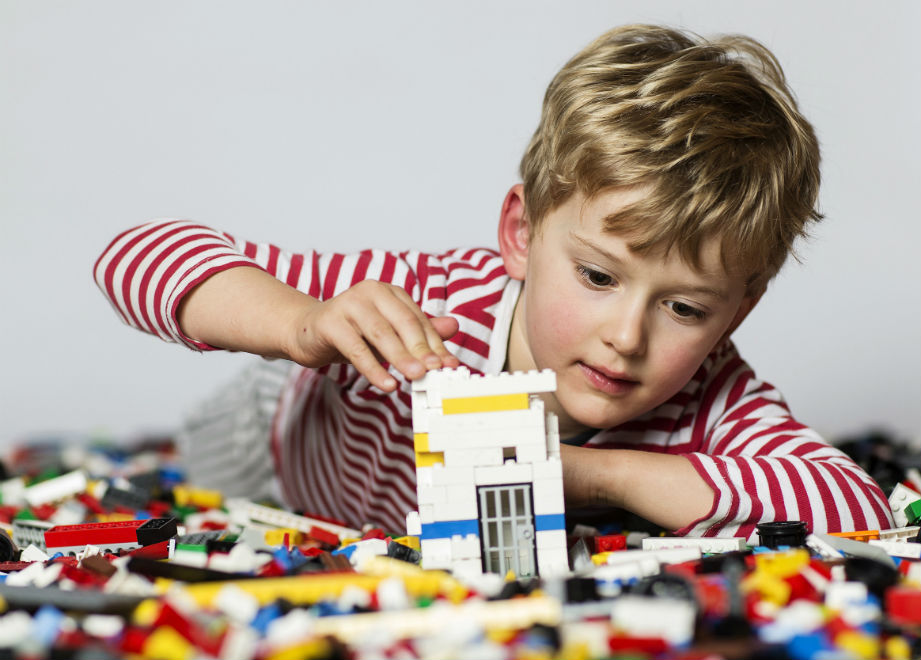
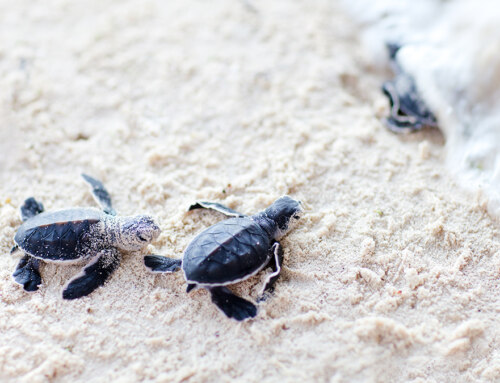

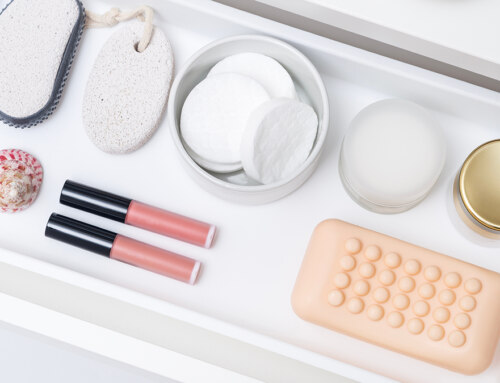








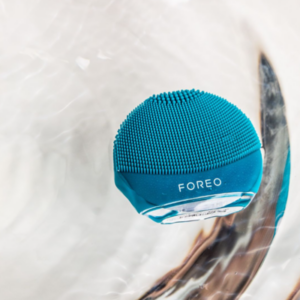


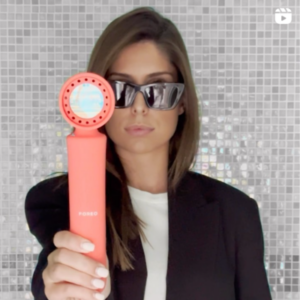
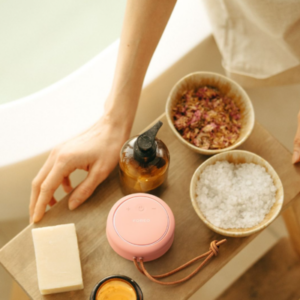

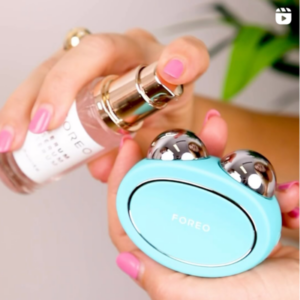
Thank you for posting such a blog!